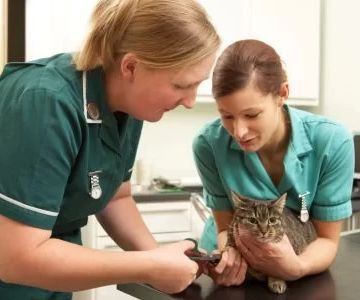- 1-Understanding-the-Role-of-a-Veterinary-Assistant
- 2-Typical-Education-and-Training-Duration
- 3-Alternative-Paths-and-Certifications
- 4-Key-Skills-Developed-During-Training
- 5-Career-Opportunities-After-Becoming-a-Vet-Assistant
- 6-Personal-Experience-and-Professional-Advice
1. Understanding the Role of a Veterinary Assistant
A veterinary assistant plays a crucial supporting role in animal healthcare by assisting veterinarians and veterinary technicians in daily tasks. Responsibilities often include feeding and caring for animals, cleaning cages, assisting with examinations, and managing administrative duties. Understanding this role helps clarify the educational requirements and skillsets needed to become effective in the position.
2. Typical Education and Training Duration
The question of how many years to be a veterinary assistant is common among aspiring animal care professionals. Typically, becoming a veterinary assistant can take anywhere from a few months to two years, depending on the program and whether it leads to certification. Many community colleges and vocational schools offer certificate or diploma programs lasting six months to one year. Some may opt for associate degrees that take about two years.
Hands-on training through internships or externships is usually included to provide practical experience.
3. Alternative Paths and Certifications
Not all veterinary assistants follow formal education paths. Some gain experience through on-the-job training at veterinary clinics or animal shelters. However, obtaining certification from recognized bodies, such as the Approved Veterinary Assistant (AVA) credential, can enhance job prospects and credibility.
These certifications typically require passing an exam and demonstrate a standard of knowledge and professionalism.
4. Key Skills Developed During Training
Training programs emphasize skills such as animal handling, basic medical procedures, record-keeping, and client communication. Developing empathy, attention to detail, and the ability to work in a fast-paced environment are also essential. Many programs incorporate lessons on safety, sanitation, and ethical treatment of animals.
These competencies prepare veterinary assistants to contribute effectively to animal health teams.
5. Career Opportunities After Becoming a Vet Assistant
Upon completing training, veterinary assistants find opportunities in private clinics, animal hospitals, zoos, research facilities, and shelters. Experience gained can also serve as a stepping stone toward becoming a veterinary technician or pursuing further education in veterinary medicine.
Some assistants choose to specialize in areas such as laboratory animal care or exotic animal handling.
6. Personal Experience and Professional Advice
Jessica, a veterinary assistant with two years of experience, shares how enrolling in a one-year certificate program helped her quickly enter the field. She recommends aspiring assistants focus on gaining diverse experiences and building strong relationships with veterinarians and pet owners. Continuing education and certifications are valuable for career growth.
If you’re ready to start your journey, explore recommended training programs and resources to find the best fit for your goals.











